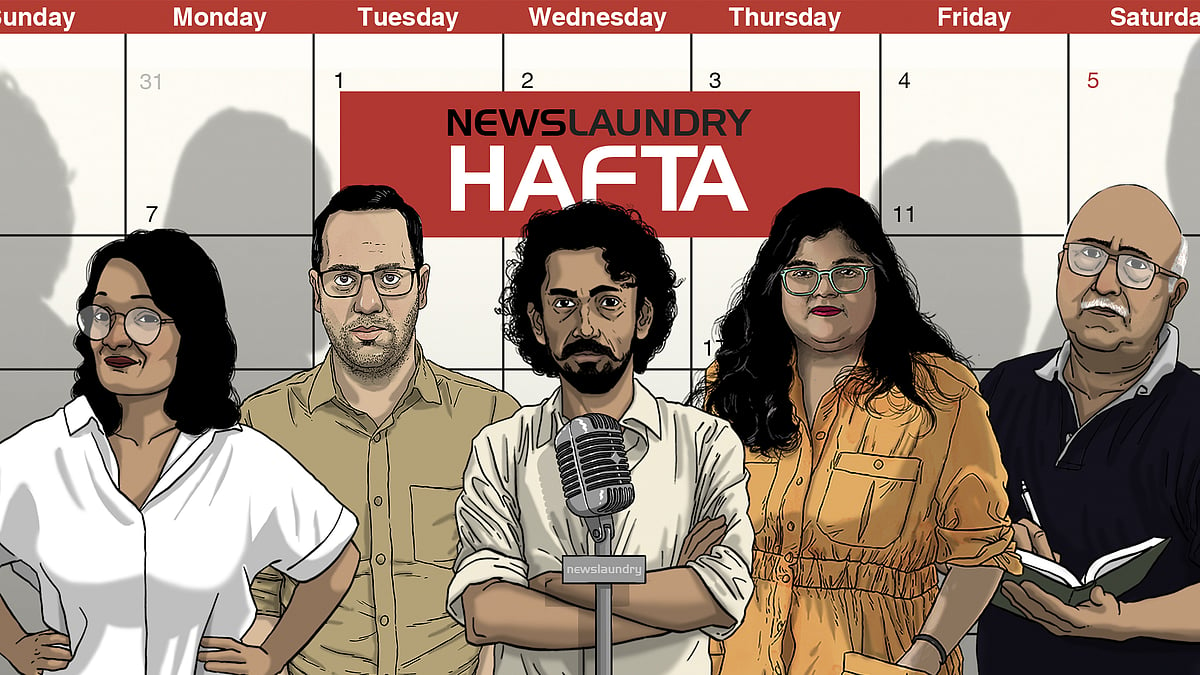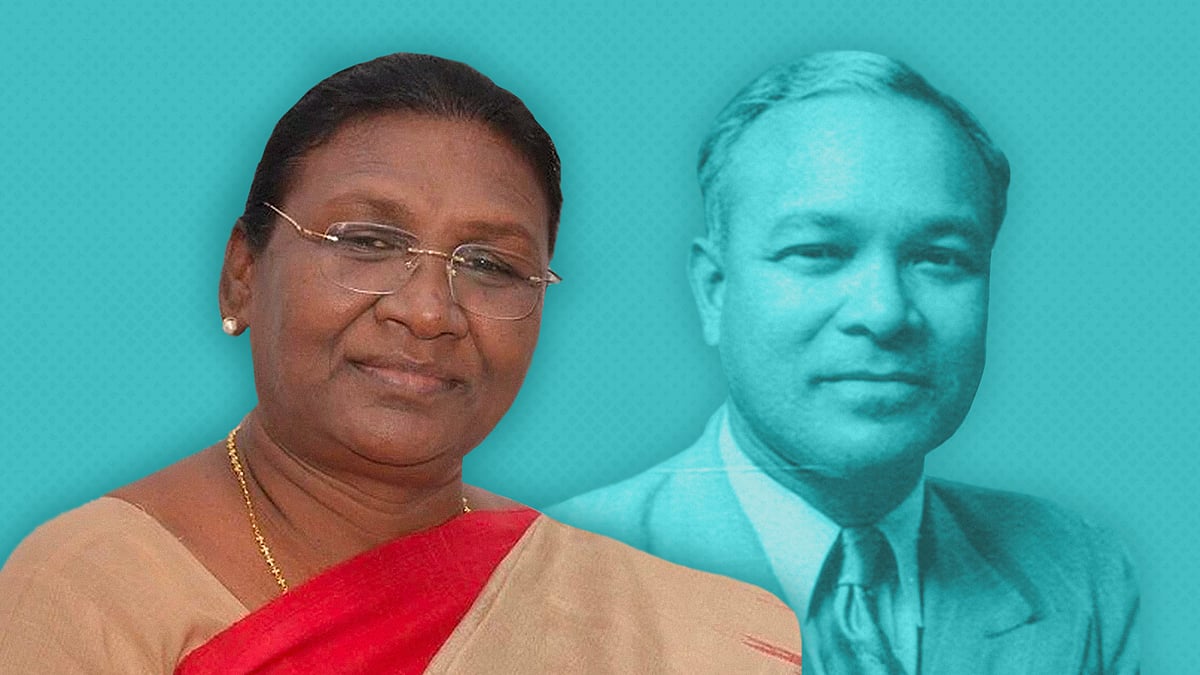India’s reaction to the British queen’s death is a measure of its confidence as a republic
As a sovereign republic on the rise, India can look at the British monarchy with historical distance.
“Aao rani hum dhoyenge paalki, yehi rai huee hai Jawhaharlal ki.”
“Come, O Queen! We will carry the palanquin, that’s what Jawaharlal wants.”
That’s what poet Nagarjun wrote when Queen Elizabeth II and her husband Prince Philip made their first visit to India in 1961. He was taking a dig at the pomp with which the Jawaharlal Nehru government had rolled out the red carpet for the royals. Such disapproval, however, wasn’t shared very widely. In the public psyche, the interplay of historical memory and the constant embodiment of a symbolic and assuring authority formed an engaging knot which it couldn’t be tied only to the resenting anti-colonial strand.
If sections of the public were understandably indifferent to the visit, there were also crowds of common citizens on the streets cheering for the Queen as she waved from her limousine. Aside from the enthusiastic public reception, the visit also saw the rare gesture of both President Dr Rajendra Prasad and Prime Minister Nehru standing together at the Delhi airport to receive the Queen.
In hindsight, the significance of the Queen’s presence as chief guest at the Republic Day parade in 1961 couldn’t be missed as India was one of the few countries which had declared itself a republic but remained a member of the Commonwealth of Nations, headed by the British monarch. In May 1949, Nehru had moved a motion in the Constituent Assembly, which also functioned as a provisional parliament, to get the approval for his government’s decision, guided by its foreign policy and economic interests, to retain historical ties with the Commonwealth. The motion was approved.
The public expression of grief over the long-reigning monarch’s death and the tributes paid to her have been remarkable in how they located and defined the wellspring of British nationhood. The idea of Britishness found an eloquent expression in the past two weeks of national mourning, and in the process showed how the monarchy remained a cohesive force in generating the sense of belonging to a national community.
The co-existence of Britain’s democracy and a modern apparatus of governance with allegiance to a monarch, if only as figurehead, is remarkable in how it blends the appeal of tradition with rational-legal authority – two of the three sources of authority that sociologist Max Weber could identify in modern societies.
In some ways, the moving response of vast sections of the British population to the Queen’s passing showed that the idea of British nationalism is steeped in what British thinker Sir Roger Scruton called the “shared public realm of mutual loyalty”.
Some observers, including Jaithirth Rao in India, have also used literary references to explain the making of the British national outlook. In Shakespeare’s historical play Henry V, for instance, King Henry tells the English army preparing for the Battle of Agincourt that all of them - aristocratic lords and peasants alike - constitute a “band of brothers”. There is also a reference to all of them, even the conscripts, as volunteers. Thus the grounds of political obligation of the state are sought in the free association of individuals sharing the social and political vision of British nationhood.
The evolution of the Westminster model of British democracy has not mandated the exclusion of the everyday value system of British identity. Thus, if one sees the British nation state as an “imagined community”, to borrow Benedict Anderson’s phrase, even an invisible gaze of monarchic presence has been a part of that imagination along with other constituents.
For almost seven decades – and amid the noisy rifts, power plays, electoral choices, and shifting sands of national and international politics – Queen Elizabeth II remained an invisible constant in Britain’s national life. As a constitutional monarch, her restraint and conduct of graceful absence was a stabilising experience, a reassuring backdrop to the flux of everyday public life. Naturally, the recalling of such neat certitudes of 70 years have made their way to the nature and scale of national mourning.
In former colonies of the British empire, such as India, reactions to the Queen’s death have had to wrestle with the choice of recalling from long-term national memory of the empire or the short -term memory of the decades of decolonisation. In India, the symbols of British imperialism may evoke the same response as is reserved for the old people who are no longer harmful but are berated because they once were.
In recent years, there have been detailed estimates of the plunder of India’s resources and wealth during British rule, Congress party leader Shashi Tharoor’s book, An Era of Darkness, being one such. Tharoor has built on the analysis of the economic costs of British rule that can be traced back to nationalist writers of the late 19th century such as Dadabhai Naoroji and RC Dutt. Last week, Prime Minister Narendra Modi too referred to India leaving behind colonial bondage while unveiling a statue of freedom fighter Subhas Chandra Bose.
Indeed, the Modi government’s Central Vista project is pitched, on one level, as a dismantling of the relics of architecture and designs suited to colonial governance. Such historical grievances, however, haven’t shaped the Indian state’s attitudes to the British monarchy, let alone the Indian citizenry’s. It’s by no means hostile. Most Indian people who know about the monarchy see the residents of Buckingham Palace with the curiosity reserved for the lives of top league celebrities.
As a sovereign republic, which in its post-Independence journey has surpassed Britain in the size of its economy, India can look at the British monarchy with historical distance. The chronicling of colonial damage hasn’t come in the way of many Indians looking at the majesty of traditional order, the reassurance of shared public realm, and the continuity and collective sense of loss that marked the national mourning of an admired monarch. In some ways, the President Droupadi Murmu’s presence at the Queen’s funeral was a reminder of the duality of association – the elected figurehead of the Indian republic representing the country at the last procession of the hereditary figurehead of Britain for 70 years. Seventy years in which a confident Indian republic didn’t find more reasons to be bitter about the British monarchy, seventy years after which it could mourn the monarch’s death on its own terms. That’s how much the world order has changed. That’s how the Queen kept up with the theme of change with continuity.
 Hafta 398: Queen Elizabeth’s death, Congress party’s Bharat Jodo Yatra
Hafta 398: Queen Elizabeth’s death, Congress party’s Bharat Jodo Yatra Tribal ties, East India outreach, sulking allies: Why Droupadi Murmu ticks all boxes for BJP
Tribal ties, East India outreach, sulking allies: Why Droupadi Murmu ticks all boxes for BJP
